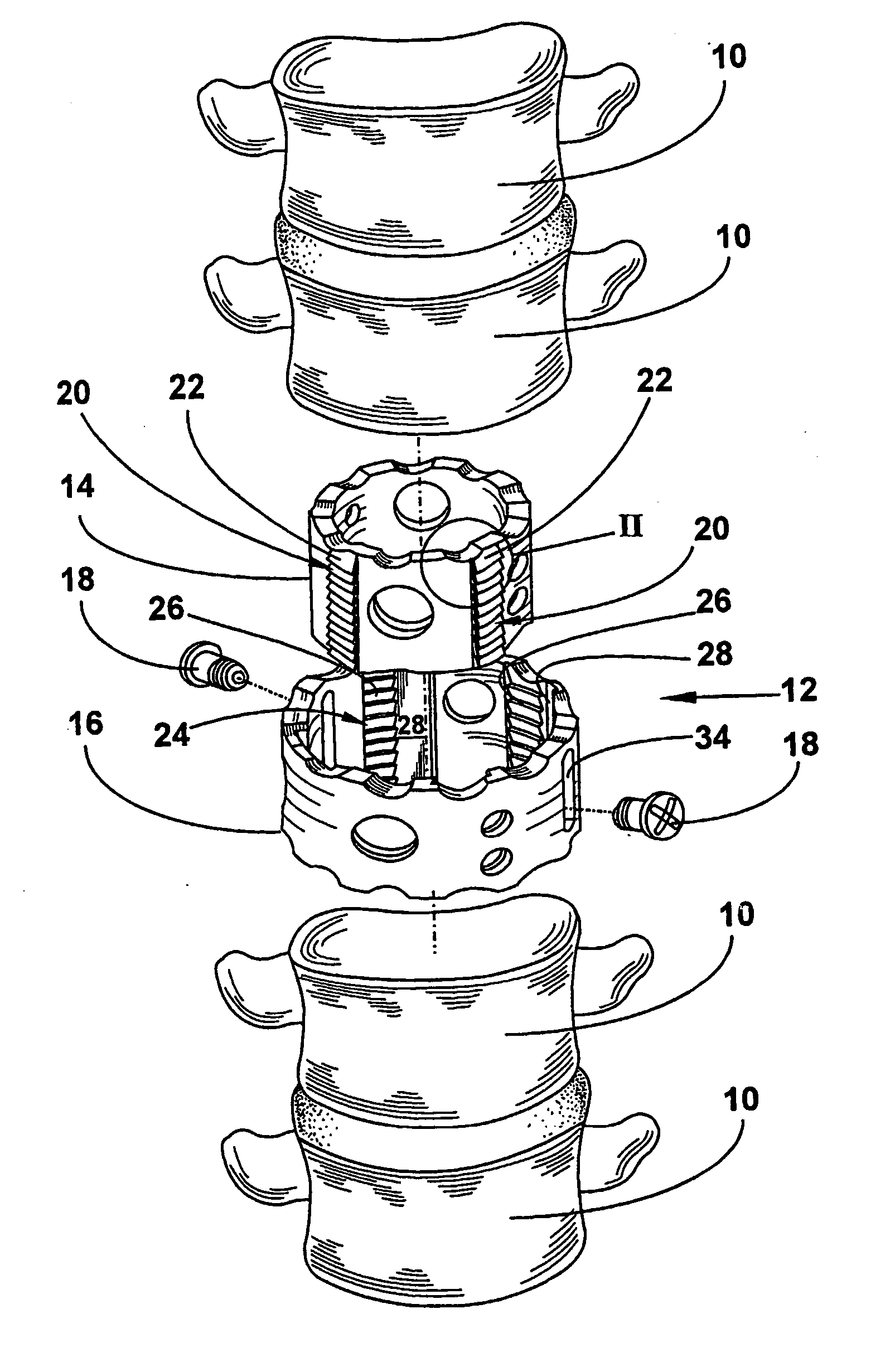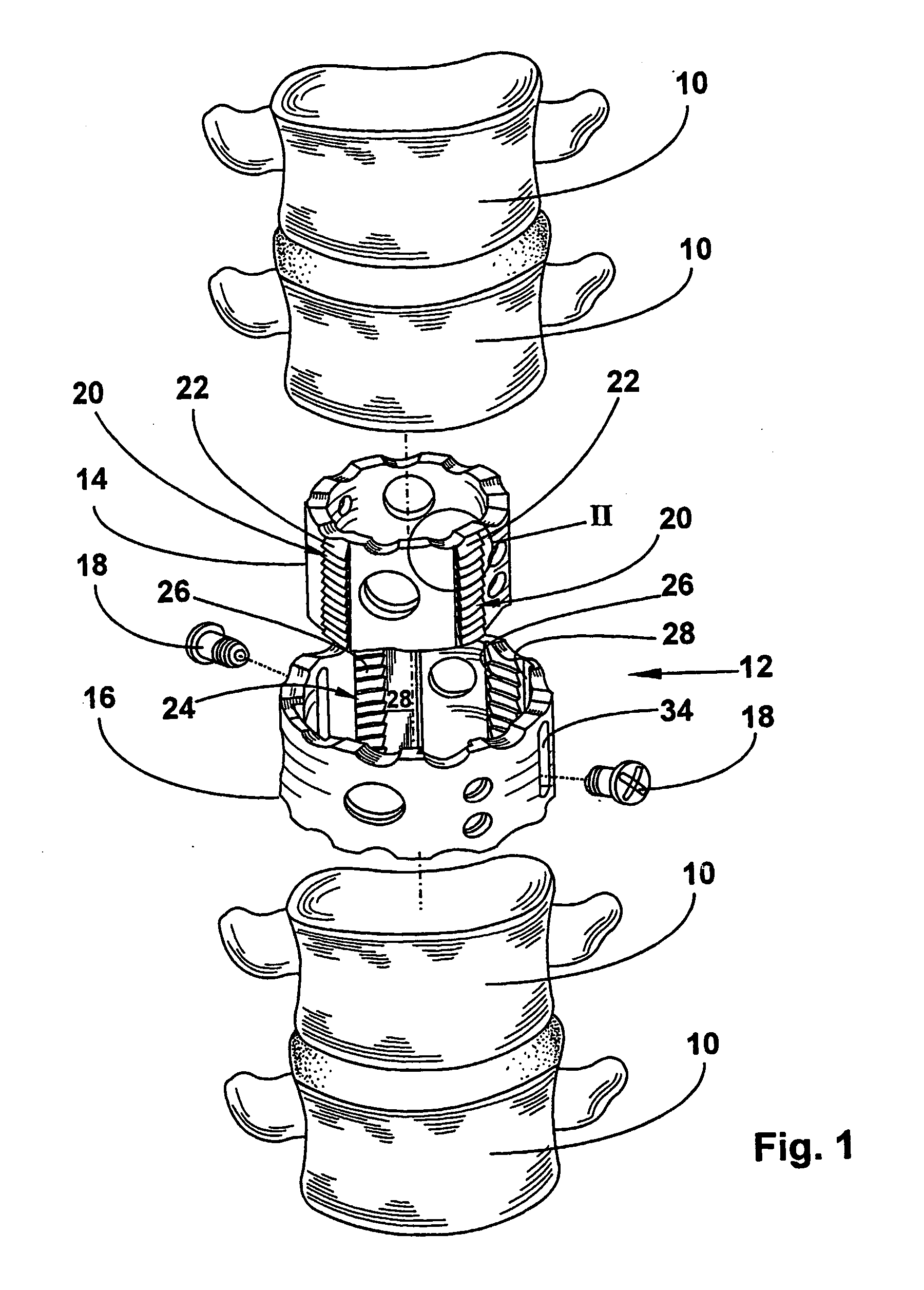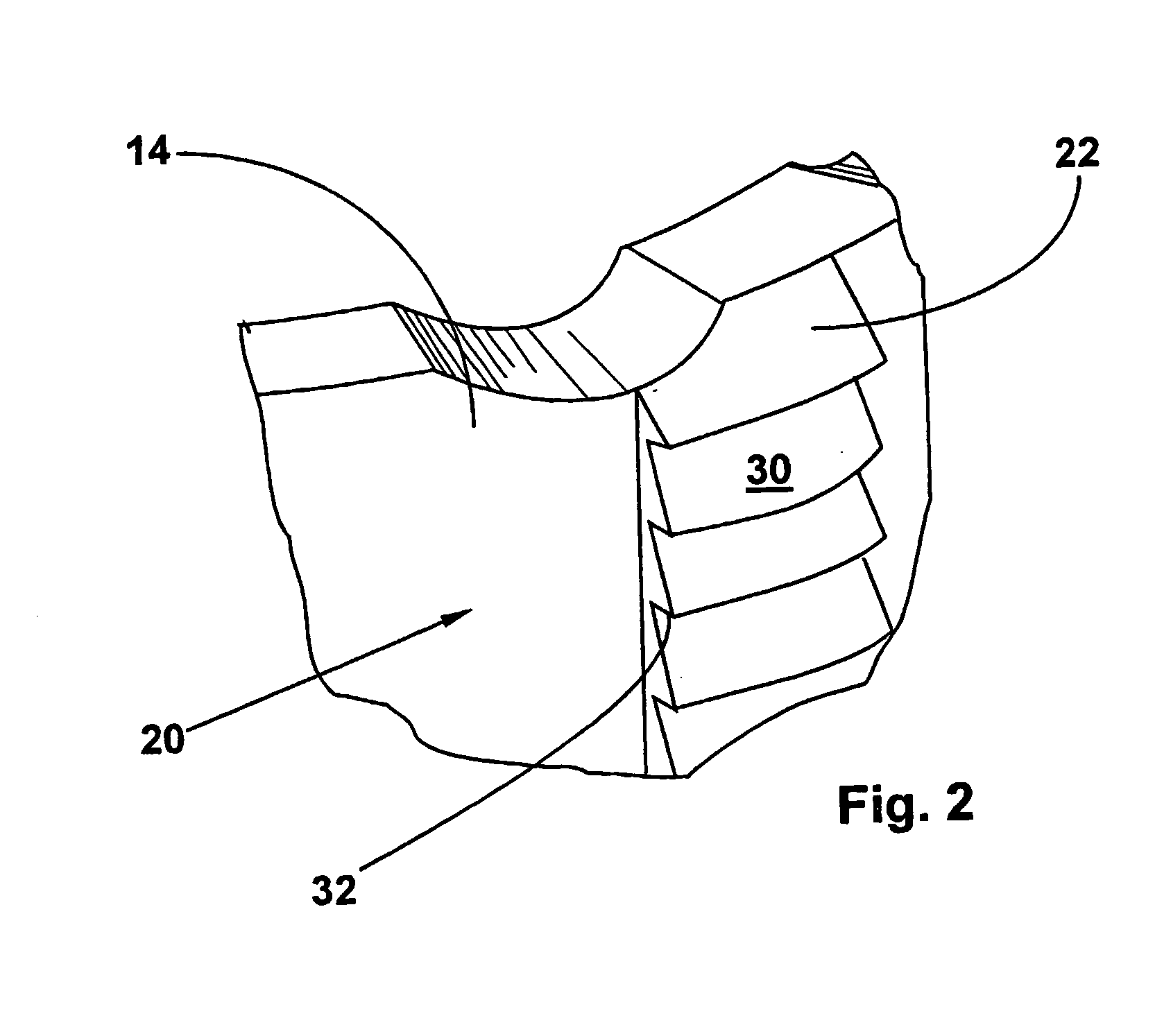Vertebral body placeholder
a placeholder and vertebral body technology, applied in the field of vertebral body spacers, can solve the problems of difficult to bring the two cylinders into the side, the desired size of the spacer is difficult to adjust, and the side is difficult to bring the two cylinders into the spacer, so as to achieve the effect of convenient and reliable adjustmen
- Summary
- Abstract
- Description
- Claims
- Application Information
AI Technical Summary
Benefits of technology
Problems solved by technology
Method used
Image
Examples
Embodiment Construction
[0021]FIG. 1 is an exploded schematic partial view of a human spine in which there is arranged, between two vertebral bodies 10, a bipartite, cylindrical hollow spacer 12 for a vertebral body. Said spacer 12 is comprised of a smaller, cylindrical inner body 14 and of a larger, sleeve-like outer body 16 which is also cylindrical and positively and telescopically receives the inner body 14. In an effort to achieve an optimal position of the spine, the operating surgeon may fix inner body 14 and outer body 16 in the desired relative position using two fixation screws 18. A long hole 34 arranged in the outer body 16 permits to fix the spacer 12 in any position. For further details relating to spacer 12 the reader is referred to German Patent DE 296 16 778 / European Patent 832 622, the full content of which is incorporated herein by way of reference.
[0022] Four rows of detent lugs 20 are provided at regular intervals around the circumference of the outer side of inner body 14, said rows ...
PUM
 Login to View More
Login to View More Abstract
Description
Claims
Application Information
 Login to View More
Login to View More - R&D
- Intellectual Property
- Life Sciences
- Materials
- Tech Scout
- Unparalleled Data Quality
- Higher Quality Content
- 60% Fewer Hallucinations
Browse by: Latest US Patents, China's latest patents, Technical Efficacy Thesaurus, Application Domain, Technology Topic, Popular Technical Reports.
© 2025 PatSnap. All rights reserved.Legal|Privacy policy|Modern Slavery Act Transparency Statement|Sitemap|About US| Contact US: help@patsnap.com



